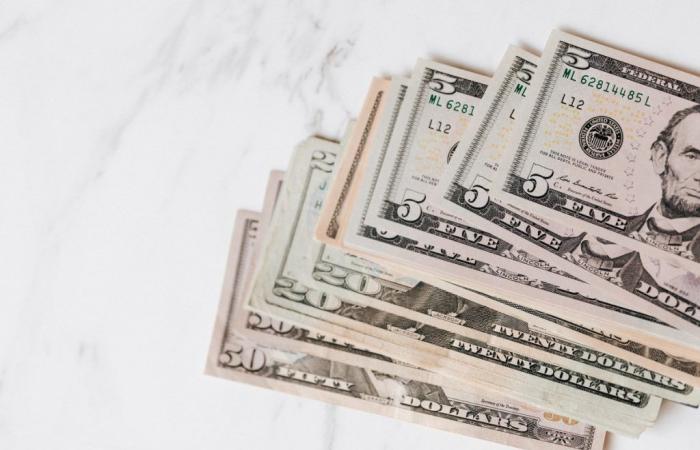
The dollar closed this Tuesday’s session (2) practically stable, after the Central Bank of Brazil (BC) held an additional “currency swap” auction to contain part of the advance of the North American currency in the country.
In practice, this operation means that the BC sells dollars on the futures market, without involving Brazilian currency reserves. It is an indirect intervention by the institution in the foreign exchange market, which occurs when the dollar rises more sharply. (understand below)
Ibovespa, the main stock index on the stock exchange, ended on a high.
See below for a summary of the markets.
As a result, you accumulate:
- increase of 0.86% in the week and month;
- increase of 4.24% in the year.
Yesterday, before the BC’s announcement about the exchange auction, the currency closed the day at R$5.0591, the highest level since October.
The Ibovespa ended up 0.44%, at 127,549 points.
As a result, you accumulate:
- drop of 0.44% in the week and month;
- decline of 4.95% in the year.
The day before, the index had closed at 126,990 points.
Understand what makes the dollar rise or fall
What’s moving the markets?
The BC announced on Monday night (1st) that it would hold an additional traditional currency swap auction in this session, worth US$1 billion. This was the municipality’s first non-rollover intervention in the foreign exchange market since the end of 2022.
The BC justifies that it held the auction to meet the demand for the maturity of NTN-A3, a public bond indexed to the dollar that has not been traded by the National Treasury for years, but there are still institutions in the Brazilian market that hold the paper in their portfolios.
By the middle of this month, a total of R$18.534 billion in NTN-A3s that were negotiated in 1997 will expire. In current values, this is equivalent to around US$3.6 to US$3.7 billion, according to market participants .
As the holders of these securities in Brazil have carried some short positions in dollars over the years to cover exposure to these securities, now that the securities are about to mature it is necessary to close these short positions — which is done by purchasing dollars.
Thus, the BC announced the traditional swap auction, operation with an effect equivalent to the sale of dollars in the futures market, to avoid additional pressure due to the demand from NTN-A3 holders. In total, 20 thousand contracts were sold.
Despite the BC’s justification, however, some analysts still attribute the action solely to the fact that the dollar has jumped 0.86% the day before, the highest closing value since October 13 last year. The day before, the currency closed at R$5.0591. The accumulated increase was 1.57% in two business days.
Meanwhile, abroad, the index that compares the dollar to a basket of strong pairs fell, losing steam after earlier reaching a high in five years, which helped to provide relief to the currencies of emerging countries.
On the agenda, investors turned their attention to more North American economic data, released this Tuesday.
According to information released by the US Department of Commerce, new orders to industry increased 1.4% in February, after falling 3.8% in January. The result was above what was expected by the market, which projected an increase of 1.0% in the month.
The US Department of Labor reported that job openings in the country remained stable at higher levels in February, while the number of people leaving their jobs increased marginally.
In addition, new comments from authorities at the Federal Reserve (Fed, the US central bank) were also on the radar, as investors continue to look for new signals about the autarky’s next steps in US interest rates.
This Tuesday, the president of the Cleveland Fed district, Loretta Mester, said that she continues to believe that the US central bank is on the right track to reduce interest rates this year, but still needs to see the data confirm that such a move is possible.
“If the economy develops as expected, then, in my opinion, it will be appropriate for [o Comitê Federal de Mercado Aberto] start reducing interest rates later this year, as inflation continues its downward trajectory towards 2% and the job market and economic growth remain solid,” he said at an event held by the National Association for Business Economics, the Cleveland Association for Business Economics and by Team NEO.
Traders are pricing in a 62% chance that the Fed will cut rates by 0.25 percentage points in June, and see two more cuts in 2024, according to CMEGroup’s FedWatch tool.
*With information from Reuters
Tags: Dollar closes practically stable intervened rise currency Brazil Ibovespa rises Economy
--




